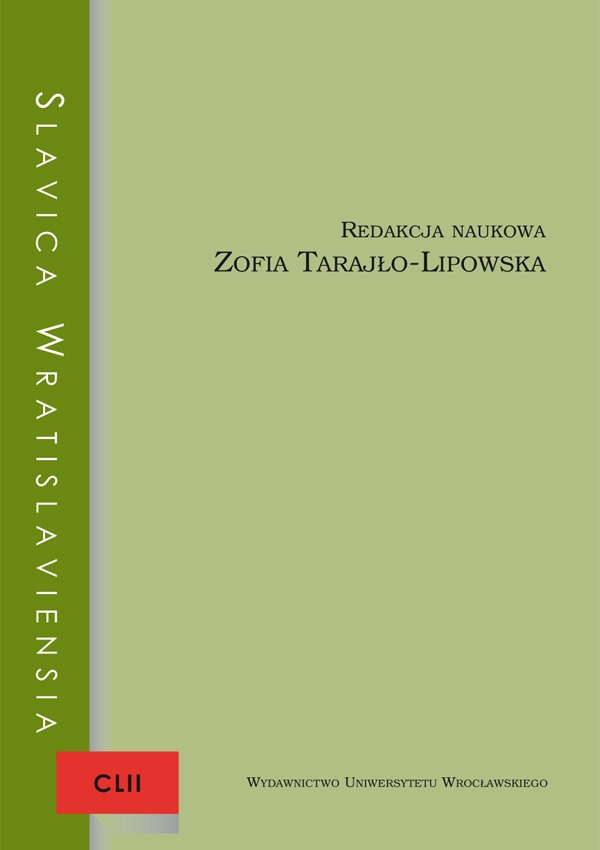

Artykuły

Decadent eroticism and crime. The portrait of the femme fatale in Miroslav Krleža’s novel Povratak Filipa Latinovicza [The Return of Philip Latinovic]
Miroslav Krleža 1893–1981 in his novel Povratak Filipa Latinovicza 1932 formed the myth of the femme fatale in the picture of two women: Regina and Bobočka. Women are the main obsession of the hero, the painter Filip, who returns home after twenty-three years to find lost sources of his identity and lost inspiration for his art. The novel – story of Filip’s life – regarding the problem that women are just objects of desire, is divided into two parts: the trauma of Regina belongs to his youth first part of the novel and affects his present; Bobočka is the frustration in his present. Women with no clear identity are mainly presented with the body, they represent the irrational world and mystery and they explore their body to use men and improve their position in society. Eroticism is the place of Evil. In this sense especially bizarre is Bobočka, with whom Filip falls desperately in love: she ruined men in the past and she does the same to present lovers. Filip plays the role of an observer: he experiences especially bizarre erotic scene in a threesome between Bobočka, her lover Kyriales and her man Baločanski. The grotesque, obscene scene is the place of modern hell, where the hero is punished by looking at his beloved with two other men. The end is very characteristic and amplifies the love by – connection death. Baločanski murders Bobočka, the solution of that decadent eroticism is Death. This figures also as a punishment for Bobočka in the sense of Christian philosophy: she was a vampire for the men and Baločanki murders her in the same grotesque manner. This novel was very modern in the literature of Central Europe at the beginning of the twentieth Century. Very modern is the theme of eroticism, its connection with the evil and death, even though the presentation of the woman follows the traditional stereotype of the prostitute. Eroticism in the broken mirror – in the schizophrenic perspective of sensible narrator – expresses the importance of Freud’s psychoanalysis.
Dekadencki erotyzm i zbrodnia. Portret femme fatale w powieści Miroslava Krležy Powrót Filipa Latinowicza
Miroslav Krleža 1893–1981 w powieści Povratak Filipa Latinovicza 1932 opisuje typ femme fatale na przykładzie dwoch kobiet: Reginy i Bobočki. Kobiety są obsesją głownego bohatera, malarza Filipa, ktory wraca do domu po dwudziestu trzech latach, aby znaleźć utracone źrodła tożsamości i utraconą inspirację dla swojej tworczości. Powieść to historia życia Filipa, skupionego wokoł dwoch problemow: urazu związanego z Reginą, co należy do jego młodości pierwsza część powieści i ma wpływ na jego obecną frustrację z powodu Bobočki. Kobiety są bez wyraźnej osobowości, głownie reprezentuje ją ciało w stosunku do mężczyzn, co określa ich pozycję w społeczeństwie. Erotyka jest miejscem Zła. W tym zakresie specjalnym przypadkiem jest Bobočka, w ktorej Filip jest beznadziejnie zakochany. W przeszłości niszczyła ona mężczyzn i to samo czyni z obecnymi kochankami. Filip gra rolę obserwatora: przeżywa szczegolną egzotykę w erotycznym trojkącie, między Bobočką, jej kochankiem Kyrialesem i jej mężem Baločanskim. Groteskowa, obsceniczna scena jest nowoczesnym piekłem, gdzie bohater odbywa karę, patrząc na ukochaną z dwoma innymi mężczyznami. Zakończenie w bardzo charakterystyczny sposob amplifikuje miłość – połączeniem ze śmiercią. Baločanski zabija Bobočkę – rozwiązaniem tego dekadenckiego erotyzmu jest Śmierć. Ten motyw jednocześnie jest karą dla Bobočki w sensie filozofi i chrześcijańskiej: była wampirem dla mężczyzn i Baločanski morduje ją w tym samym groteskowym stylu. Powieść odzwierciedla nowoczesne tendencje w literaturze Europy Środkowej na początku XX wieku. Bardzo aktualna była erotyka, powiązania z piekłem i ze śmiercią, mimo że prezentowana kobieta jest tradycyjnym stereotypem prostytutki. Erotyka jest niczym rozbite lustro, w schizofrenicznej perspektywie wrażliwego narratora zwraca uwagę na znaczenie Freudowskiej psychoanalizy.